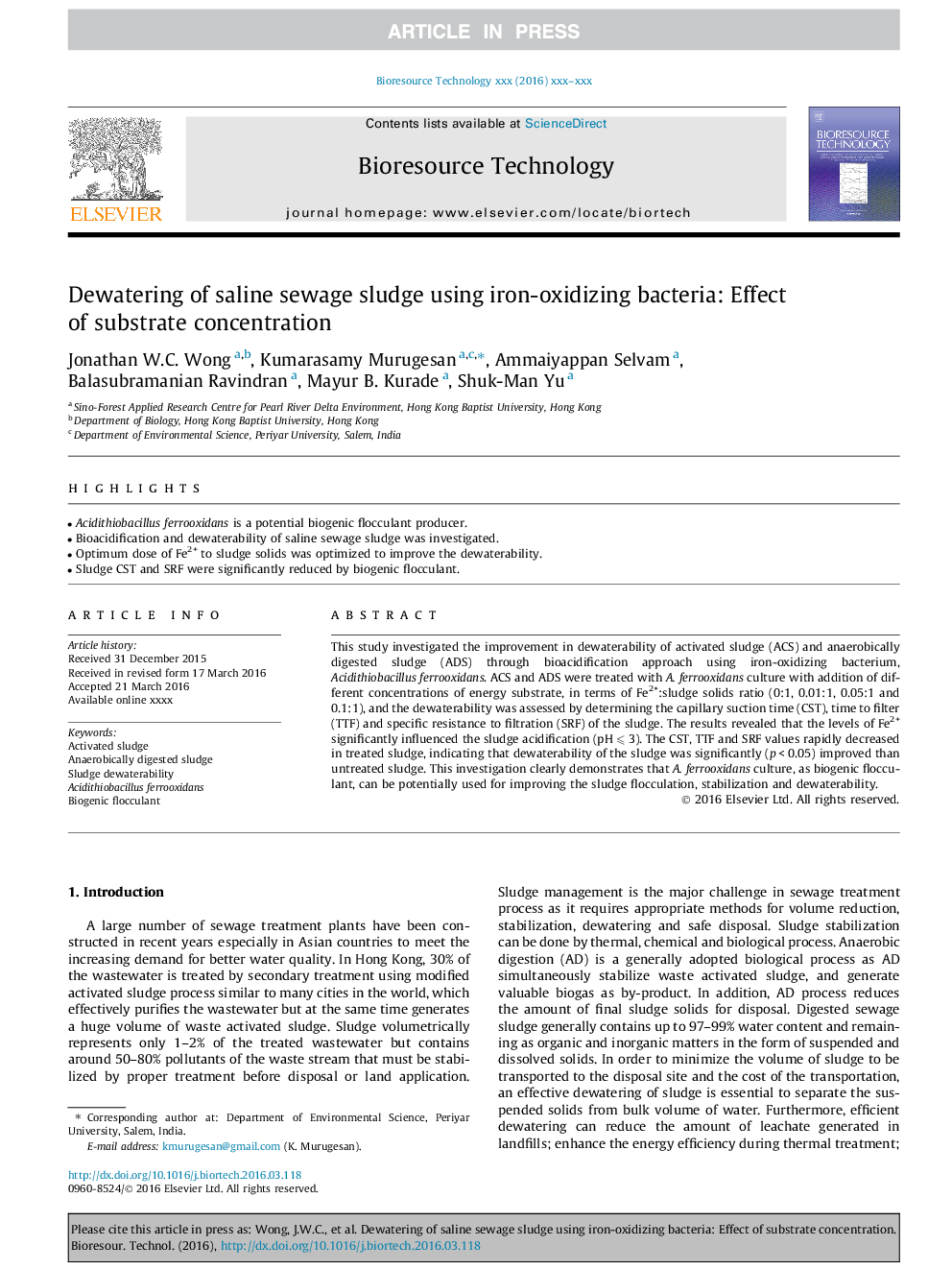| Article ID | Journal | Published Year | Pages | File Type |
|---|---|---|---|---|
| 7071038 | Bioresource Technology | 2016 | 8 Pages |
Abstract
This study investigated the improvement in dewaterability of activated sludge (ACS) and anaerobically digested sludge (ADS) through bioacidification approach using iron-oxidizing bacterium, Acidithiobacillus ferrooxidans. ACS and ADS were treated with A. ferrooxidans culture with addition of different concentrations of energy substrate, in terms of Fe2+:sludge solids ratio (0:1, 0.01:1, 0.05:1 and 0.1:1), and the dewaterability was assessed by determining the capillary suction time (CST), time to filter (TTF) and specific resistance to filtration (SRF) of the sludge. The results revealed that the levels of Fe2+ significantly influenced the sludge acidification (pH ⩽ 3). The CST, TTF and SRF values rapidly decreased in treated sludge, indicating that dewaterability of the sludge was significantly (p < 0.05) improved than untreated sludge. This investigation clearly demonstrates that A. ferrooxidans culture, as biogenic flocculant, can be potentially used for improving the sludge flocculation, stabilization and dewaterability.
Keywords
Related Topics
Physical Sciences and Engineering
Chemical Engineering
Process Chemistry and Technology
Authors
Jonathan W.C. Wong, Kumarasamy Murugesan, Ammaiyappan Selvam, Balasubramanian Ravindran, Mayur B. Kurade, Shuk-Man Yu,
